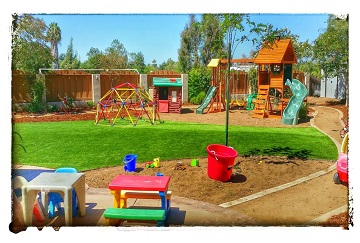Introduction:
Selecting the right location for your preschool is a critical decision that can significantly impact the success and growth of your educational institution. The ideal location should provide a safe, accessible, and conducive environment for young children’s learning and development. In this article, we will guide you through the key factors to consider when choosing the best location for your preschool.
- Accessibility and Convenience:
One of the primary considerations for a preschool location is accessibility. Ensure that the site is easily reachable for parents and families in your target area. Look for a location with good transportation links, including proximity to major roads, public transportation, and parking facilities. Additionally, consider the convenience of drop-off and pick-up points, ensuring a smooth and hassle-free experience for parents.
- Safety and Security:
The safety and security of children are of paramount importance in a preschool setting. Choose a location that prioritizes safety measures, such as well-lit areas, secure entry points, and appropriate fencing. Conduct a thorough assessment of potential locations to identify any safety hazards or risks, such as busy roads, sharp edges, or nearby industrial areas. Additionally, ensure that the premises comply with fire safety regulations and have the necessary emergency exits and equipment.
- Neighborhood and Surroundings:
Evaluate the neighborhood and surroundings of potential locations. Look for areas with a low crime rate, a peaceful ambiance, and a child-friendly atmosphere. Consider nearby amenities that can enhance the preschool experience, such as parks, libraries, community centers, and recreational facilities. A location in close proximity to these amenities can provide opportunities for enriching field trips and outdoor learning experiences.
- Demographics and Target Market:
Understand the demographics of the area and align it with your target market. Consider factors such as population density, the number of young families, and the socioeconomic profile of the community. A location with a higher concentration of families with young children can ensure a consistent enrollment and a strong demand for your preschool services. Conduct thorough market research to gauge the needs and preferences of parents in the area.
- Space and Facilities:
Assess the available space and facilities within the potential locations. Ensure that the premises have sufficient indoor and outdoor areas for activities, including classrooms, play areas, and administrative spaces. The layout should facilitate easy movement and supervision of children, with appropriate amenities such as toilets, handwashing stations, and storage facilities. Consider the potential for expansion or future growth as you envision the long-term success of your preschool.
- Zoning and Regulations:
Familiarize yourself with local zoning regulations and restrictions that may impact the establishment of a preschool in specific areas. Check with the local authorities and education departments to ensure compliance with zoning laws and obtain the necessary permits and licenses. Understanding these regulations beforehand can save time, effort, and potential setbacks in the location selection process.
- Cost and Budget:
Evaluate the financial aspects associated with different locations. Set a budget for your preschool establishment and consider factors such as rental or property prices, maintenance costs, utilities, and any additional expenses associated with the chosen location. Ensure that the financial commitments align with your business plan and projections.
- Competition Analysis:
Research existing preschools in the area to assess the level of competition. Analyze their offerings, strengths, and weaknesses to identify a gap in the market that your preschool can fulfill. Choosing a location with less competition or a unique selling proposition can give your preschool a competitive edge and attract parents seeking alternatives.
Conclusion:
Selecting the best location for your preschool is a crucial step in establishing a successful and thriving educational institution. By considering factors such as accessibility, safety, demographics, facilities, zoning regulations, and competition, you can make an informed decision that aligns with your vision and goals. Remember, a well-chosen location sets the foundation for a nurturing, engaging, and inspiring learning environment for young children and sets the stage for long-term success.

Excellent guide! Your tips on choosing the perfect location for a preschool are insightful and incredibly helpful for aspiring owners.